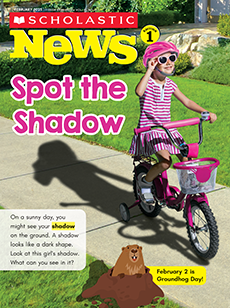A guide for using our resources
Children will explore the attributes of four diff erent seeds.
Vocabulary: seed, describe, huge, light, shell
Science Focus: seeds/plants
CCSS (and states that have similar standards): RI.1.1 key details; RI.1.2 main topic and key details; RI.1.10 read and discuss fi rst-grade texts; RF.1.2.A vowels; RF.1.3.D syllables; L.1.F.1 adjectives
Simple, spectacular ideas to boost your lessons.
Paired Text Suggestion: The Bad Seed by Jory John
Paired Text Suggestion: The Bad Seed by Jory John
- This story follows a seed who goes against the odds to make a positive change. It will quickly become a read-aloud favorite!
Adjective Hunt: Describe the Seeds
Adjective Hunt: Describe the Seeds
- After reading each box, challenge students to find one or two adjectives. Does the word describe the seed? A tree? A plant? Something else? They can circle each adjective they find.
- For an extra challenge, ask students to look for a verb in each box.
Syllable Game: Hop It Out
Syllable Game: Hop It Out
- Read words from the article aloud. Have students repeat the word and hop on one foot for each syllable. Students can stay up on just one leg until they hear the next word!
- Suggested words include: animal, burdock, coconut, dandelion, fluffy, shell, spiky, sunflower.
Hands-on Activity: Seed Observation
Hands-on Activity: Seed Observation
Skills: observations, writing, drawing
Materials: Seed Observation skill sheet, lima bean, cup of water, pencil
- Students will observe and record the ways a seed can change over time!
- Provide each student with a Seed Observation skill sheet. Give each student or group a lima bean and have students draw what they see. Ask students to write two words to describe their seed next to their drawing. What color is it? What shape? How does it feel?
- Next, place each lima bean in a cup of water. Keep the lima beans soaking for at least three hours, or overnight if possible. Students can fill out the second section of their sheet. How long will the lima bean stay in the water? What do they think it will look like? Have them draw their idea!
- After at least three hours, take out the lima beans from the water and have students fi ll out the last part of their Seed Observation skill sheet. Students can draw what their seed looks like after soaking and write two more words to describe the seed!
